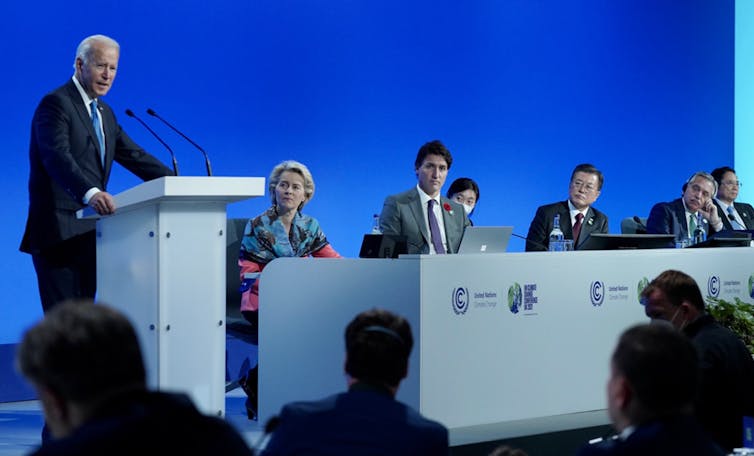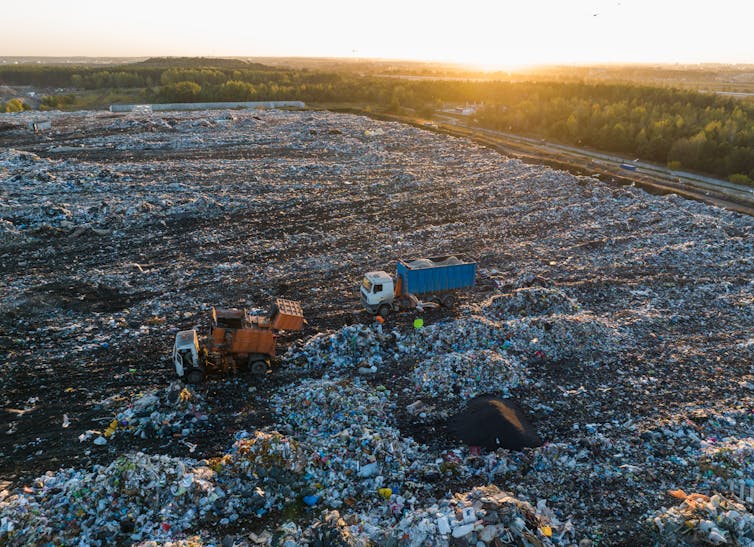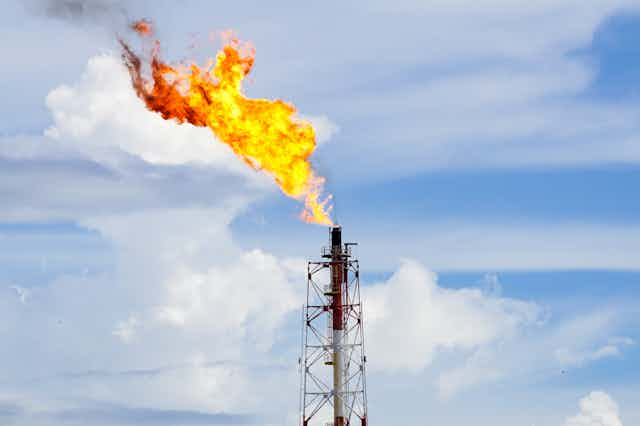Methane – a potent greenhouse gas and the second biggest driver of global warming after carbon dioxide (CO₂) – had its moment in the spotlight in 2021. Over 100 countries signed on to the Global Methane Pledge to cut emissions by 30% compared to 2020 levels by 2030.
This is a useful goal, but our new research shows that something is still missing: stringent policies to eliminate methane emissions.
Our study is the first global review of methane policies which have been adopted across the world since the 1970s. It reveals that only around 13% of man-made methane emissions from the biggest sources (agriculture, energy and waste) is regulated by policies capable of controlling and preventing them.
This falls to 10% if we take a conservative view of the total emissions and regions covered by specific policies and whether they have been fully or partially implemented.
These policies may mandate companies to find and fix methane leaks, install equipment which can capture emissions, charge them for every unit of methane released or reward them for making use of methane, like extracting biogas from rotting food and other organic waste. Our study showed that the majority (70%) of policies have been adopted in the US and Europe.
Methane is over 80 times more powerful in trapping heat in Earth’s atmosphere than CO₂ but lasts for a much shorter time. Since methane in the air breaks down within about a decade (compared to centuries for CO₂), phasing out emissions could rapidly reduce the rate at which the planet is heating.

For any hope of meeting global climate targets, deep methane reductions are needed immediately. Our research shows that countries which have committed to deep cuts must now expand and strengthen policies for eliminating their emissions. The remaining countries should step up their efforts on methane too.
Regulation varies by sector
We systematically examined policies which have been introduced in 79 countries to reduce methane emissions across farming, solid and liquid waste management and the energy sectors (including the extraction, transportation and consumption of fossil fuels – coal, oil and gas).
Motivations for regulating methane varied. Not only does the gas contribute to climate change, but it can also generate tropospheric ozone – a harmful air pollutant. Methane is also a safety hazard if its concentration in the air reaches an explosive range (5-15%).
But if it is captured, methane becomes a source of energy as the major component of natural gas. And so regulating methane, for example by incentivising the capture of methane from coalbeds, can be cheap and useful.
How effective such policies have been is far from clear though, as countries do not tend to quantify their emissions using direct measurements.
Regulations are more frequently used to address fossil (oil, gas and coal) rather than biogenic (livestock, solid and liquid waste) sources of methane. In fact, 41% of all policies targeted methane from coal mines and oil refineries, compared with 25% for farms and landfills.
Taxes and charges, on the quantities of waste for example, are more common for regulating biogenic sources whereas financial incentives, like feed-in tariffs for electricity generated from captured coal mine methane, are more frequently used in fossil methane policies.

Policies targeting methane emissions from the oil and gas sector tend to be more stringent than those targeting coal mines. Similarly, policies targeting methane emissions from solid and liquid waste are more stringent than those addressing livestock emissions.
These divergent approaches to regulating different methane sources may be the result of opposition from the fossil fuel and agricultural industries. The relative importance of these industries to national and regional economies and energy and food supply may also explain why government regulation has so far proved inadequate.
Where regulation must improve
More stringent policies and a consistent approach for quantifying how much methane is being emitted from each source will be key to bringing regulation in line with global commitments.
Improving the monitoring of methane emissions is particularly important for enabling deeper cuts. Historically, methane emissions have been difficult and costly to measure, partly because it is an invisible gas and compared to CO₂, only minor emissions cause substantial warming.
However, methane reduction is still often perceived by policymakers as a choice rather than a necessary complement to ongoing decarbonisation efforts focused on CO₂.
Within almost every sector there are major methane sources that have been largely overlooked. These include the digestive gases of cows and other livestock, methane from the ventilation shafts of coal mines, high-emitting sources in the oil and gas sector (so called super-emitters), and from abandoned mines and oil and gas wells.

In the energy sector, emissions from non-operated joint ventures are particularly neglected by regulation. This is a type of business structure where a company owns an equity interest without assuming day-to-day operational control.
These are usually owned by major oil and gas companies, but operated by local partners – national oil and gas firms in developing countries are a prime example. Supply chains are another important source, particularly with internationally-traded commodities like liquefied natural gas (LNG) and coking coal used in steelmaking.
In the oil and gas sector, where methane may be more cost-effective to reduce because the captured gas could be monetised, global commitments like the Paris Agreement require the industry’s own emissions to fall alongside falling demand for fossil fuels across all economies.
As Dr Fatih Birol, executive director of the International Energy Agency, recently put it, the next UN climate change conference (COP28) in the United Arab Emirates will be “a moment of truth” for both oil- and gas-rich countries and the industries exploiting these climate-damaging fuels.

Don’t have time to read about climate change as much as you’d like?
Get a weekly roundup in your inbox instead. Every Wednesday, The Conversation’s environment editor writes Imagine, a short email that goes a little deeper into just one climate issue. Join the 10,000+ readers who’ve subscribed so far.

